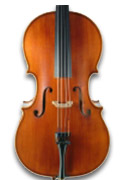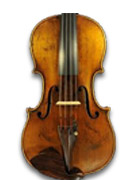French cello bows.
French cello bows stand for quality and beauty, centuries of tradition, innovation, and craftsmanship.
The story of French cello bows intertwines with the evolution of string instruments and the pursuit of excellence in music performance.
Delving into the world of French cello bows unveils a fascinating journey of skilled artisans, iconic makers,
and the enduring allure of their creations.
The legacy of French cello bow making traces its roots to the 18th century, a period marked by the flourishing cultural scene of Paris.
As the demand for refined musical instruments grew, so did the need for superior bows capable of eliciting the nuances of expression from stringed instruments like the cello.
It was during this era that masters such as François Tourte, Jean-Baptiste Vuillaume, and Dominique Peccatte emerged, leaving an indelible mark on the craft of bow making.
Pernambuco wood, sourced from the forests of Brazil, became the material of choice for crafting fine cello bows due to its exceptional qualities.
Known for its strength, flexibility, beauty and tonal resonance, pernambuco provided the ideal canvas for artisans to sculpt bows of unparalleled quality.
Each cello bow began as a raw piece of wood, carefully selected for its grain structure and acoustic properties, before undergoing a meticulous process of carving,
shaping, and finishing.
Central to the allure of French cello bows is their exquisite design and meticulous attention to detail.
The curvature of the stick, the placement of the frog, and the delicacy of the hair—all elements meticulously crafted to achieve optimal balance, weight distribution,
and responsiveness.
The frog, typically adorned with intricate inlays of mother-of-pearl or ebony, serves not only as a functional component but also as a testament to the artisan's skill and aesthetic sensibilities.
What distinguishes French cello bows is their versatility and dynamic playability., and refinement.
Renowned for their balanced feel and precise articulation, these bows empower cellists to explore the full spectrum of expression,
from the ethereal whispers of pianissimo to the thunderous crescendos of fortissimo.
The inherent flexibility of French cello bows allows for nuanced control over bow speed, pressure, and contact point, enabling musicians to shape phrases with subtlety and grace.
The legacy of French bow making extends beyond the realms of tradition, embracing innovation and adaptation in response to changing musical landscapes.
While the techniques and materials may have evolved over time, the commitment to excellence and the pursuit of sonic perfection remain unwavering.
Contemporary cello bow makers continue to honor the heritage of their craft while sometimes incorporating modern advancements in materials, ergonomics, and acoustics.
For cellists, the choice of a cello bow is a deeply personal one, reflecting their individual style, technique, and artistic vision.
Whether drawn to the classic elegance of a Tourte model or the modern innovations of a contemporary maker, each cello bow possesses its own unique character and voice.
In the hands of a skilled cellist, a French cello bow becomes a conduit for musical expression, transcending the boundaries of technique to communicate the depths of human emotion.
As the sun sets on another day of rehearsals and performances, the legacy of French cello bows endures, its resonance echoing through concert halls and conservatories around the world.
From the grand stages of Paris to the intimate chambers of chamber music ensembles, the timeless allure of these exquisite instruments continues to captivate audiences and inspire
generations of musicians to strive for excellence in their pursuit of musical mastery.
Our shop presents a selection of fine French cello bows; old and antique cello bows and contemporary affordable cello bows.
more French cello bows.
















